 Principle 12: Creatively use and respond to change
Principle 12: Creatively use and respond to change
Nelson Lebo and his partner Dani purchased the worst house they could find in New Zealand and renovated it while planting over 100 fruit trees. Nelson’s blog Eco Thrifty Living contains a wealth of knowledge about his experiences, here he describes the development of their permaculture food forest.
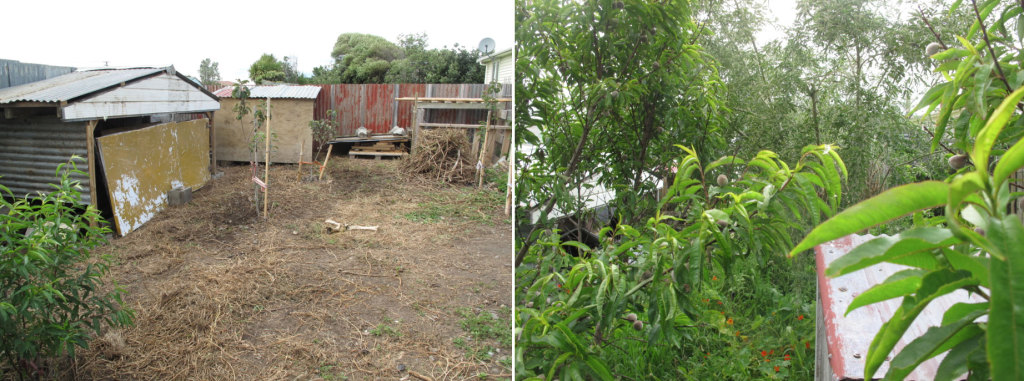
While much of our eco-thrifty renovation involved converting an old villa into an energy efficient eco-home, we also put considerable effort into turning a rubbish tip into a Garden of Eden. Much of the latter work was guided by permaculture design.
The most visible difference between permaculture and what otherwise might just be called organic gardening is the presence of a “food forest.” The word permaculture was formed in the 1970s from a contraction of the words permanent and agriculture. The choice of these words represents the emphasis on perennial crops over annuals – in other words fruit trees over vege plants.
This is not to say that permaculture excludes growing annual veges like tomatoes, potatoes and pumpkins, it just tips the scales toward apples, peaches and feijoas. Among the reasons for this emphasis is that perennial crops require less tilling than annuals. Tilling disrupts natural soil ecosystems, can cause erosion, and requires lots of energy.
Isn’t a food forest just an orchard?
A food forest differs from an orchard in a couple of ways. First, it consists of a wide range of species and even a number of varieties within each species. For example, we have planted a food forest with apples, apricots, peaches, plums, feijoas, guavas, pears, figs, paw paws, olives, and nectarines. Among the apples, we have over a dozen varieties.
Second, permaculturists tend to choose cultivars that are resistant to diseases, making them easier to manage organically. For example, Black Boy peach trees tend to be more resistant to curly leaf than other varieties.
Alongside disease-resistance, another characteristic that might be selected for is storage life. I remember 15 years ago when I was buying my first apple trees I selected varieties that were both “good keepers” and blight resistant. With a cool cellar underneath my home (in the U.S.) the apples would remain fresh for many months with no specialized cooling equipment. Another characteristic of food forests is the presence of “nurse trees.” A nurse tree is one that provides services that help the fruit trees establish themselves and thrive. As the fruit trees grow up the nurse trees are pruned away.
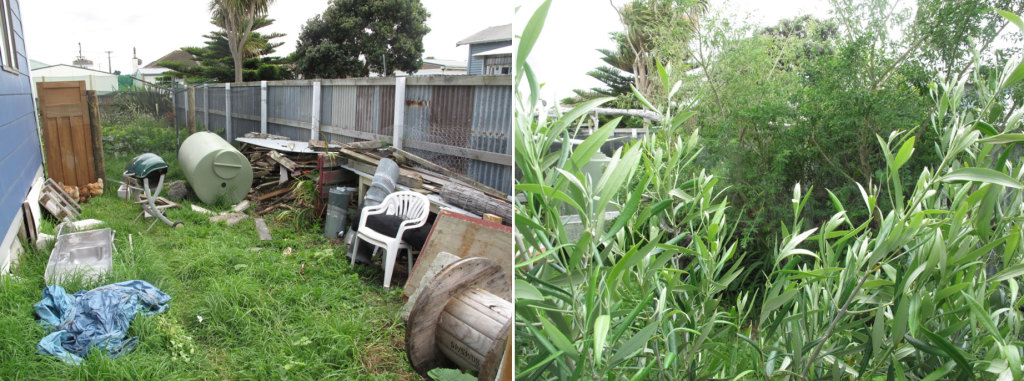
Pioneering nurse trees
Tagasaste (tree lucerne) is a common nurse tree. On our Castlecliff property we have used it extensively to nurture the fruit trees. Tagasaste is a preferred nurse tree for many reasons: it is fast growing – reaching a height of 2.5 metres in 18 months; it fixes nitrogen in the soil; it is relatively wind-tolerant and drought-tolerant; it’s foliage is good stock fodder; it’s flowers attract beneficial insects; it is a great chop-and-drop mulch for fruit trees; when it is no longer needed it can be cut down and burned as firewood.
Tagasaste is also a good companion for native saplings. For example, I inter-planted it with herbs and was amazed at how well the two grew together. At Te Kura Kaupapa Maori O Tupoho I inter-planted tagasaste with wind-hardy corokia and grisselinia around the outdoor play space for the kohanga. In the short term the tagasaste will protect the tamariki from wind and sun, but in the long term those roles will be filled by the slower growing natives.
Along the same lines, in our food forest the fast-growing tagasaste provides much needed wind protection for the fruit trees until the natives take over that role. I often refer to this type of planning as four-dimensional design because it involves a distinct time element.
Another example of four-dimensional design in a food forest is integrating fowl such as chooks and ducks. We have successfully rotated our “ladies” through the whole of our Castlecliff property for pest control, ‘weed-eating’, and building soil fertility.
Peace, Nelson Lebo
Food Forest Design and Installation Workshop
On Sunday, 7th December, 3-5 pm we will be installing a food forest in Gonville (New Zealand), and thought it would be a great chance to offer a very hands-on workshop.
Designing a food forest for wind, sun and water using fruit trees, natives and tagasaste. Space is limited. Registration essential. Email: [email protected], 06 344 5013
More about the Eco Thrifty Living project
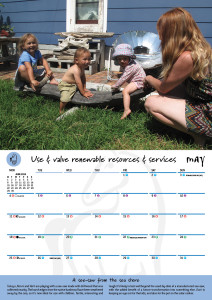

If you are after some ideas on how to get serious about using alternatives and conserving what we already have, rather than living as if there is an limitless supply of resources then check out:
The Holistic Life: Sustainability through Permaculture
Is a great place to start for anyone wanting to live more sustainably. In it Ian Lillington fulfils a need for a simple and up to date introduction to permaculture, highlighting how our own behaviour is a central issue in permaculture design.

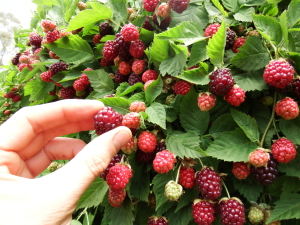

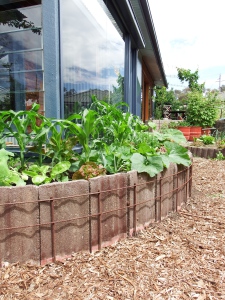
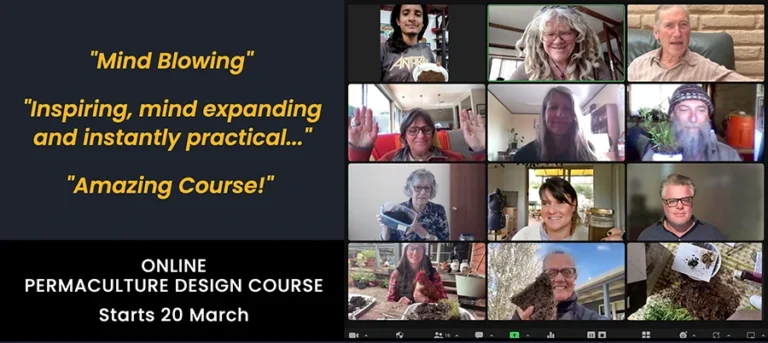
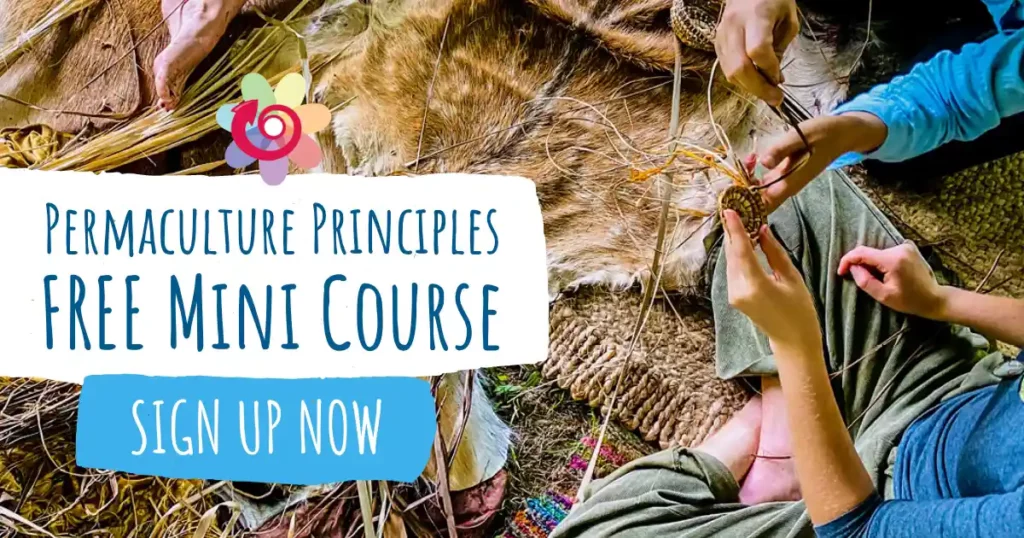
Sorry, I should have edited before posting; …the soil organisms come up from the soil to eat decomposed organic matter (they can not eat raw organic matter, straw, cardboard, newspaper, bark chips) then they go back into the soil and poop out the decomposed organic matter they ate into the soil. They do the mixing of organic matter into any soil better than we humans think we can. Double dig plant beds once, trenches, add decomposed organic matter as you double dig your beds, rake and firm the beds (they should be at least 12 inches or more high by this point, being raked down from 3 or 4 feet of fluffy turned over soil), Make 6″X6″ trenches at the base of your beds between the walkway and the bed. Hopefully your trenches take water away where you want the excess water to go, grins. We all have to learn to grow vegetables, the annuals as well as cultivate perennial ‘edibles’ such as blue berries, marionberry, strawberries, asparagus, thyme, mint, oregano, raspberries, kiwi vines…it is not that tough and to be worrying about damaging our soils? Trivial. Some beds will need to be more acidic (lower pH such as beds for blueberries and potatoes), rotation of crops and using trap crops and cover crops are critical knowledge if someone wants to actually survive off the food they grow. Forests are SHADED soil and so you are wasting an entire level of this forest because nothing else can grow below the canopy. We need to learn to garden correctly. Permaculture insinuates that mankind can somehow mimic ‘nature’ and still be able to harvest enough food to survive. Never going to happen. And, fertilizer is just as important as light, water and air. Natural ecosystems that have been in place for thousands of years have all the chemistry necessary for extra plant growth tied up in the biomass. It is NOT in the soil. Soil does not come with and should not come with fertilizer. It is far better to learn about the world of chemistry, photosynthesis and botany than attempt no fertilizer, no till and expect food to come raining down. That just is not a healthy understanding of plants and food and agriculture. Man plants plants man is now in charge of very artificial system. Always. Sigh, who could imagine eating fruit just fruit for survival?
I think I know soils well and the only way to make a soil better is simply by adding decomposed DECOMPOSED organic matter to the top of the soil. All soils are great soils. One just has to understand management practices and add decomposed organic matter. Put 2″ of decomposed organic matter on top of your soil, you have managed your weeds as well as fed your soil. I have had silt loam riparian soil, caliche clay, and now am using pumice for soil. The only way one should imagine improving soil is by double digging with a shovel, one time, make plant beds, throw in decomposed organic matter as you dig and turn over create shallow trenches at the base of your beds to collect water, rake and smooth and compact before planting, plant cover crops for winter, keep dumping decomposed organic matter on top of beds; the micro and macro organisms come up out of the soil to eat decomposed organic matter, they can not eat non decomposed organic matter such as raw sheep manure, the micro and macro soil organisms go to sleep, go dormant, die until the raw non decomposed organic matter is decomposed by the decomposers who use Nitrogen for energy…so after organic matter goes through the decomposition process via Nitrogen hungry decomposers then the soil life wakes up, starts reproducing and stays vibrant until all the decomposed organic matter is gone. I think the term permaculture is a dichotomy; ‘permanent (such as self sustaining ecosystem) and culture (artificial manipulation of soil and plants to make food for a too large population). Sounds great but is inherently not true and expectations will not be met.